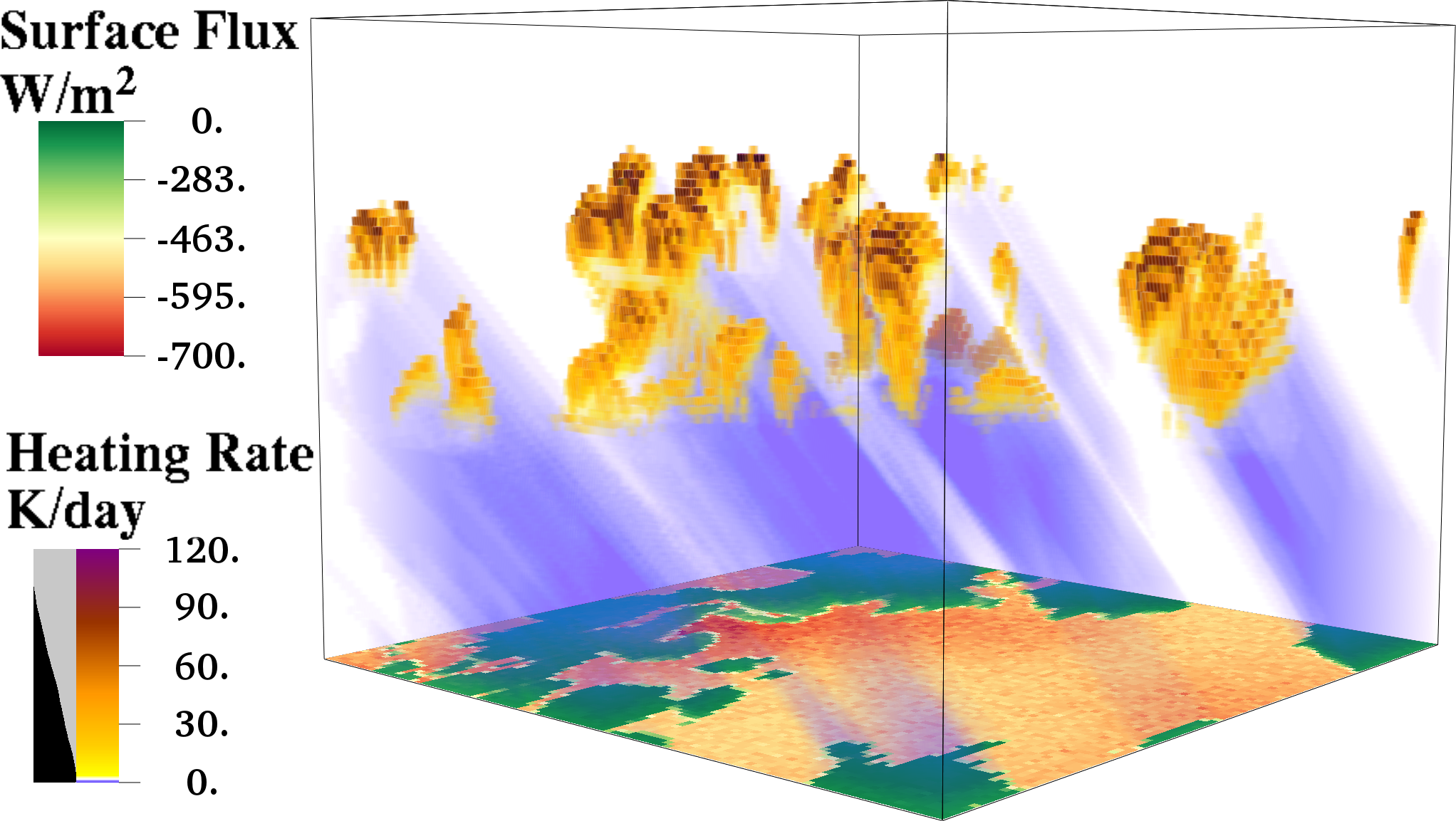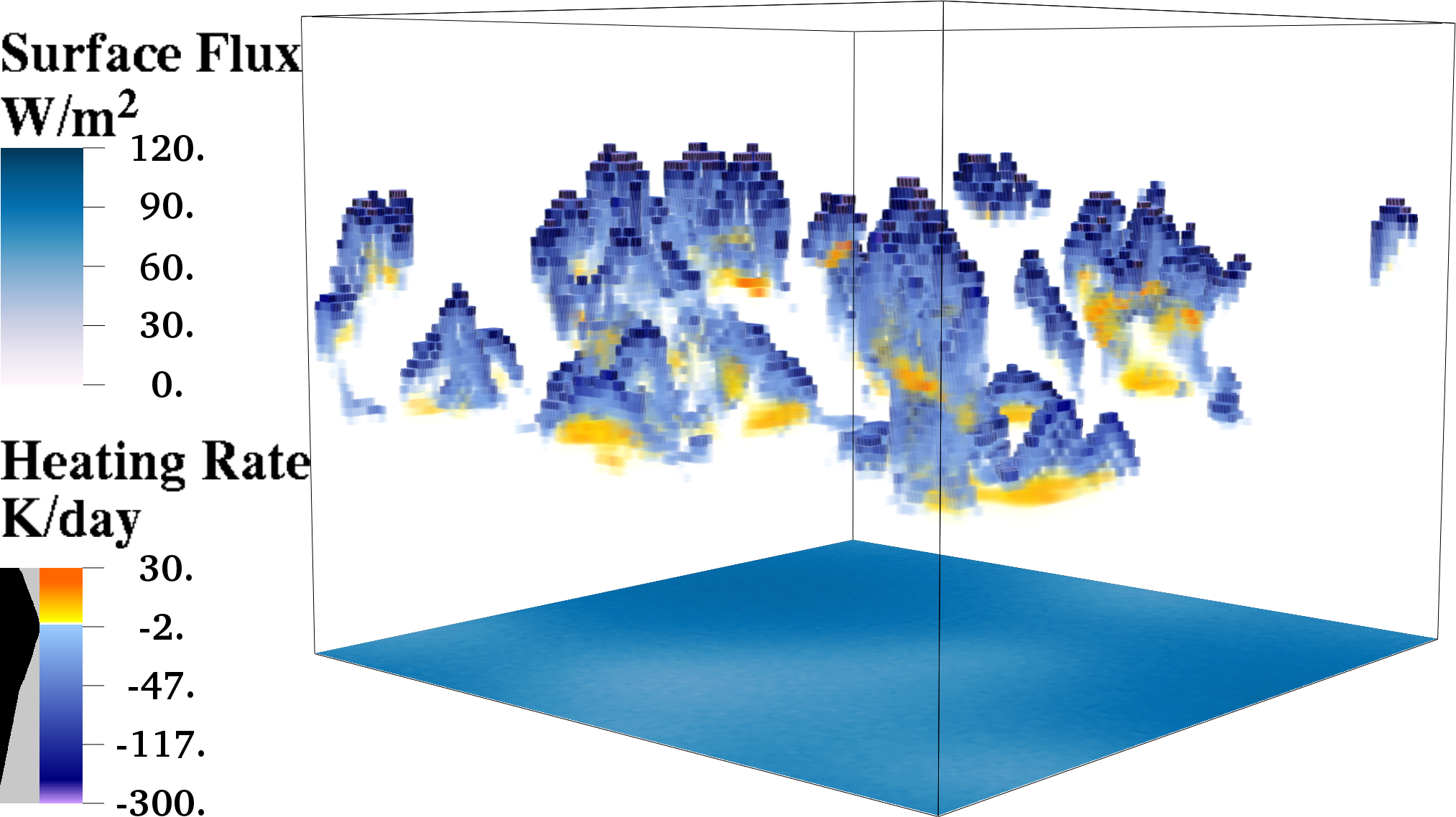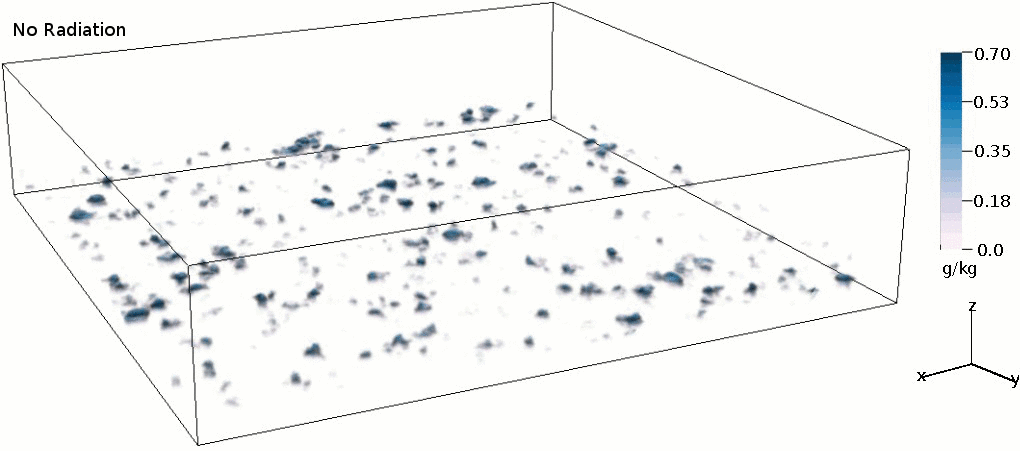Radiation-Cloud-Interactions
|
Clouds strongly impact solar and thermal radiation. Vice versa, solar and thermal radiation impact cloud formation and evolution in various ways, with varying level of scientific understanding. Clouds cast shadows on the ground which locally reduces convection and feeds back on cloud structure. Absorption and emission of solar and thermal radiation cause a strong warming or cooling close to the cloud edges (see Figure 1). This source or sink of diabatic heat first affects the droplets: E.g. latent heat released by condensation is dissipated much more rapidly if thermal emission is considered in addition to heat conduction. In consequence, droplets close to the cloud edges may grow much more rapidly than in absence of radiation. In addition to microphysical effects, radiative heating and cooling also affects dynamics (see Figure 2) which is commonly expressed through heating and cooling rates. Most of these effects are poorly quantified, mainly due to the high computational cost of radiation calculations in cloud models. This is particularly true if three-dimensional radiative transfer is considered. With increasing model resolution, however, an adequate treatment of radiation becomes more and more important. Increasing knowledge about processes on cloud scale can help to improve cloud parameterizations in current weather and climate models. At the Meteorological Institute Munich (MIM), fast parameterizations of 3D radiative transfer are currently developed and coupled to cloud resolving models. This allows the investigation of realistic 3D radiation effects on clouds, in comparison to the effects of 1D radiation approximations. Numerical radiative transfer models are used for the development of radiative transfer paramterizations:
The 3D radiative transfer paramterizations are implemented into UCLA-LES, SAM and DALES. Paramterizations: Projects: Publications:
|
|
Mai 2018





